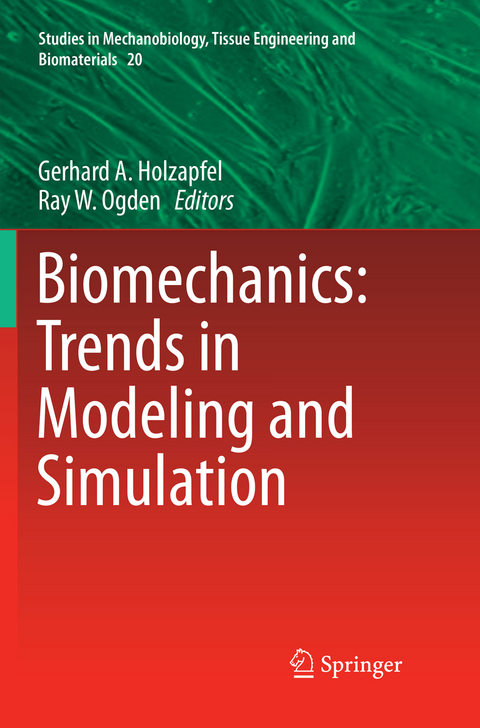
Biomechanics: Trends in Modeling and Simulation
Seiten
2018
|
Softcover reprint of the original 1st ed. 2017
Springer International Publishing (Verlag)
9783319823645 (ISBN)
Springer International Publishing (Verlag)
9783319823645 (ISBN)
The book presents a state-of-the-art overview of biomechanical and mechanobiological modeling and simulation of soft biological tissues. Seven well-known scientists working in that particular field discuss topics such as biomolecules, networks and cells as well as failure, multi-scale, agent-based, bio-chemo-mechanical and finite element models appropriate for computational analysis. Applications include arteries, the heart, vascular stents and valve implants as well as adipose, brain, collagenous and engineered tissues.
The mechanics of the whole cell and sub-cellular components as well as the extracellular matrix structure and mechanotransduction are described. In particular, the formation and remodeling of stress fibers, cytoskeletal contractility, cell adhesion and the mechanical regulation of fibroblast migration in healing myocardial infarcts are discussed. The essential ingredients of continuum mechanics are provided. Constitutive models of fiber-reinforced materials with anemphasis on arterial walls and the myocardium are discussed and the important influence of residual stresses on material response emphasized. The mechanics and function of the heart, the brain and adipose tissues are discussed as well. Particular attention is focused on microstructural and multi-scale modeling, finite element implementation and simulation of cells and tissues.
The mechanics of the whole cell and sub-cellular components as well as the extracellular matrix structure and mechanotransduction are described. In particular, the formation and remodeling of stress fibers, cytoskeletal contractility, cell adhesion and the mechanical regulation of fibroblast migration in healing myocardial infarcts are discussed. The essential ingredients of continuum mechanics are provided. Constitutive models of fiber-reinforced materials with anemphasis on arterial walls and the myocardium are discussed and the important influence of residual stresses on material response emphasized. The mechanics and function of the heart, the brain and adipose tissues are discussed as well. Particular attention is focused on microstructural and multi-scale modeling, finite element implementation and simulation of cells and tissues.
Mixture theory for modeling biological tissues: illustrations from articular cartilage.- A bio-chemo-mechanical model for cell contractility, adhesion, signaling and stress-fiber remodeling.- Nonlinear continuum mechanics and modeling the elasticity of soft biological tissues with a focus on artery wall.- Microstructure and mechanics of human aortas in health and disease.- Arterial and atherosclerotic plaque biomechanics with application to stent angiopasty modeling.- Biomechanics of myocardial ischemia and infarction.
| Erscheinungsdatum | 05.03.2022 |
|---|---|
| Reihe/Serie | Studies in Mechanobiology, Tissue Engineering and Biomaterials |
| Zusatzinfo | IX, 316 p. 129 illus., 63 illus. in color. |
| Verlagsort | Cham |
| Sprache | englisch |
| Maße | 155 x 235 mm |
| Gewicht | 504 g |
| Themenwelt | Medizin / Pharmazie ► Physiotherapie / Ergotherapie ► Orthopädie |
| Technik | |
| Schlagworte | Arterial Walls • biomechanical modeling • biomolecules • Fiber-reinforced Materials • Mechanobiological Modeling • Soft Biological Tissues |
| ISBN-13 | 9783319823645 / 9783319823645 |
| Zustand | Neuware |
| Informationen gemäß Produktsicherheitsverordnung (GPSR) | |
| Haben Sie eine Frage zum Produkt? |
Mehr entdecken
aus dem Bereich
aus dem Bereich
Spiraldynamik - programmierte Therapie für konkrete Resultate
Buch | Hardcover (2021)
Thieme (Verlag)
CHF 146,95
Kommentar zu DIN EN ISO 14155
Buch | Softcover (2024)
Beuth (Verlag)
CHF 102,20


